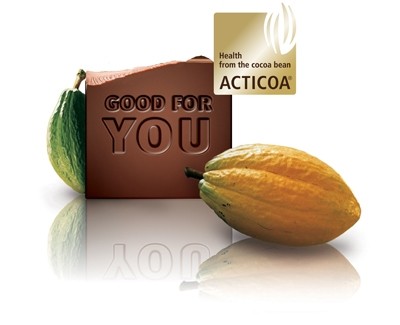Special Edition: Functional Food Trends
Heart health claims are boosting chocolate’s growth potential, report

In itsnew report Future Directions for Functional Foods, Leatherhead values the international functional food and drink market (products making specific health claims) at $24.2bn and predicts a 4 to 5 per cent annual growth rate over the next few years
In the confectionery market, dark chocolate is performing well, mainly due to its high antioxidant positioning, with an increasing emphasis on the high antioxidant content of cocoa polyphenols driving up sales in many countries, said the UK-based market analyst.
Dark chocolate now accounts for 38 per cent of the US chocolate market and is bought in up to 40 per cent of UK households, they said.
Despite the fact scientific substantiation for chocolate’s heart claims is still mounting, they have contributed to the growth in global demand for the product, often at the expense of milk chocolate, according to Leatherhead.
Although there has been activity for dark chocolate in this area, overall, the heart health confectionery market is still too small and fragmented to quantify, said the analysts.
Anti-aging claims
As well as heart health, dark chocolate is also promoted on anti-ageing claims and there has been a rising number of skin health and beauty chocolate launches in recent years, particularly in the US, said Leatherhead.
An example is Barry Callebaut’s Acticoa ingredient, which has an anti-ageing platform based on antioxidants in cocoa bean. It is used by in major brands such as Guylian and Thorntons, said the analysts.
But there were high-profile failures, like Mars's CocoaVia range,launched in 2003, which has been discontinued.
Mood foods
Dark chocolate and mood claims are growing in popularity, said Leatherhead, with suggestions that chocolate contains ‘drug-like’ constituents such as anandamines, caffeine, phenylethylamine and magnesium.
There are also claims that it can boost serotonin and stimulate the secretion of endorphins.
Leatherheadsaid that although work remains to be done to substantiate some of these claims, the consumer perception of chocolate as a good mood food is growing.
Probiotics
The global chocolate market has also carried probiotic-enriched lines. Although probiotics and prebiotics feature particularly strongly in dairy, a 2009 study from University of Ghent in Belgium claims that chocolate may represent a better carrier for probiotics than traditional dairy products.
For confectionery, Barry Callebaut is a pioneer in this area, according to the analysts, launching a functional chocolate bar containing probiotics in 2007.
However, Leatherhead said there have been relatively few confectionery entrants into the market, with major suppliers limited to US companies such as Maramor Chocolates and Attune Foods.
General growth
For confectionery, activity has been limited for functional confectionery according to the report, which applies even within the well developed Japanese market.
In this region, most products launched carrying anti/aging beauty claims have been within the confectionery sector.
Elsewhere in the US and western Europe the category remains in its infancy, despite launches from mainstream food manufacturers such as Kellogg, Mars and Barry Callebaut, said Leatherhead.
In western Europe, most functional confectionery products are competing in the specialist dietetic sector rather than mainstream food market, said the analysts.









